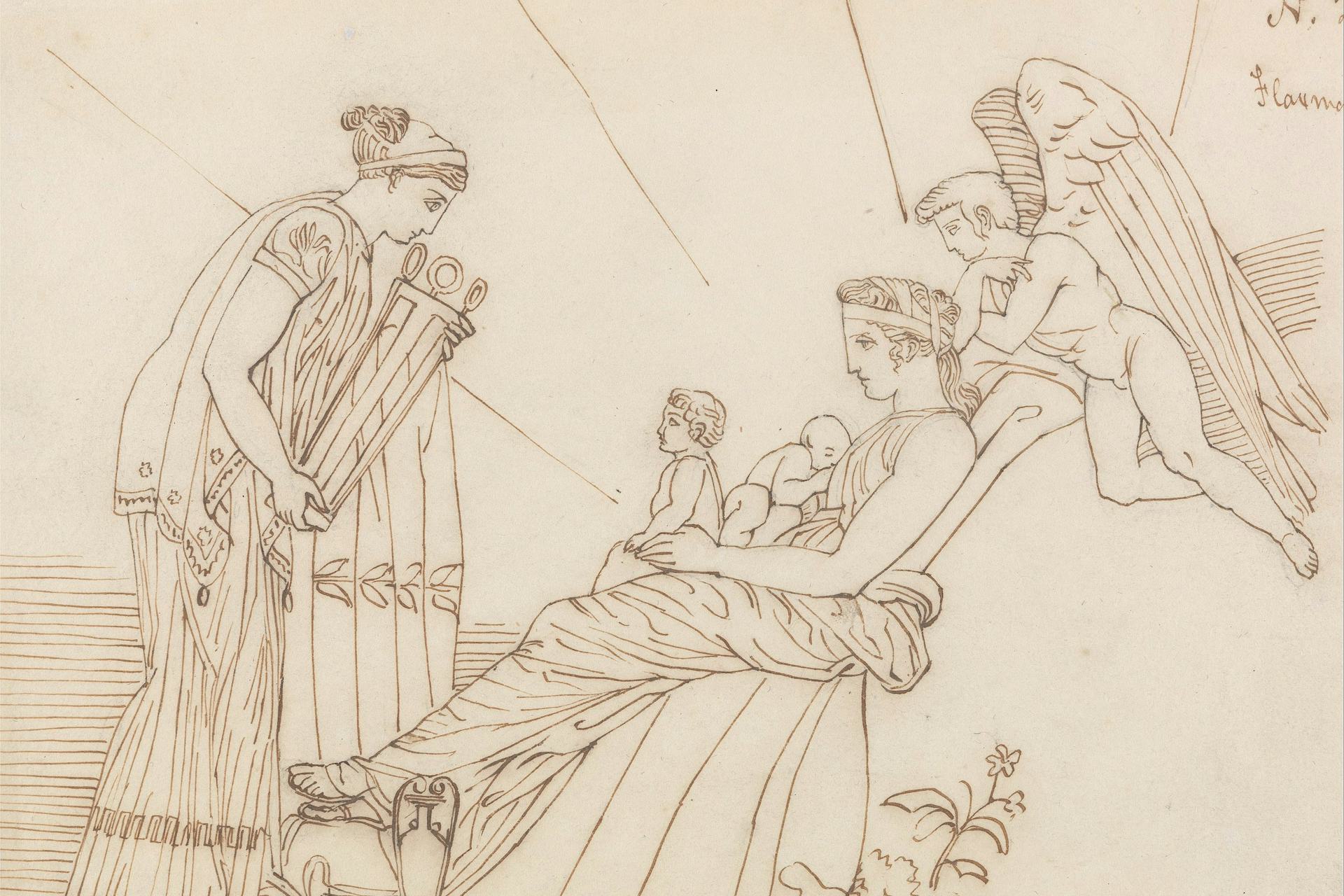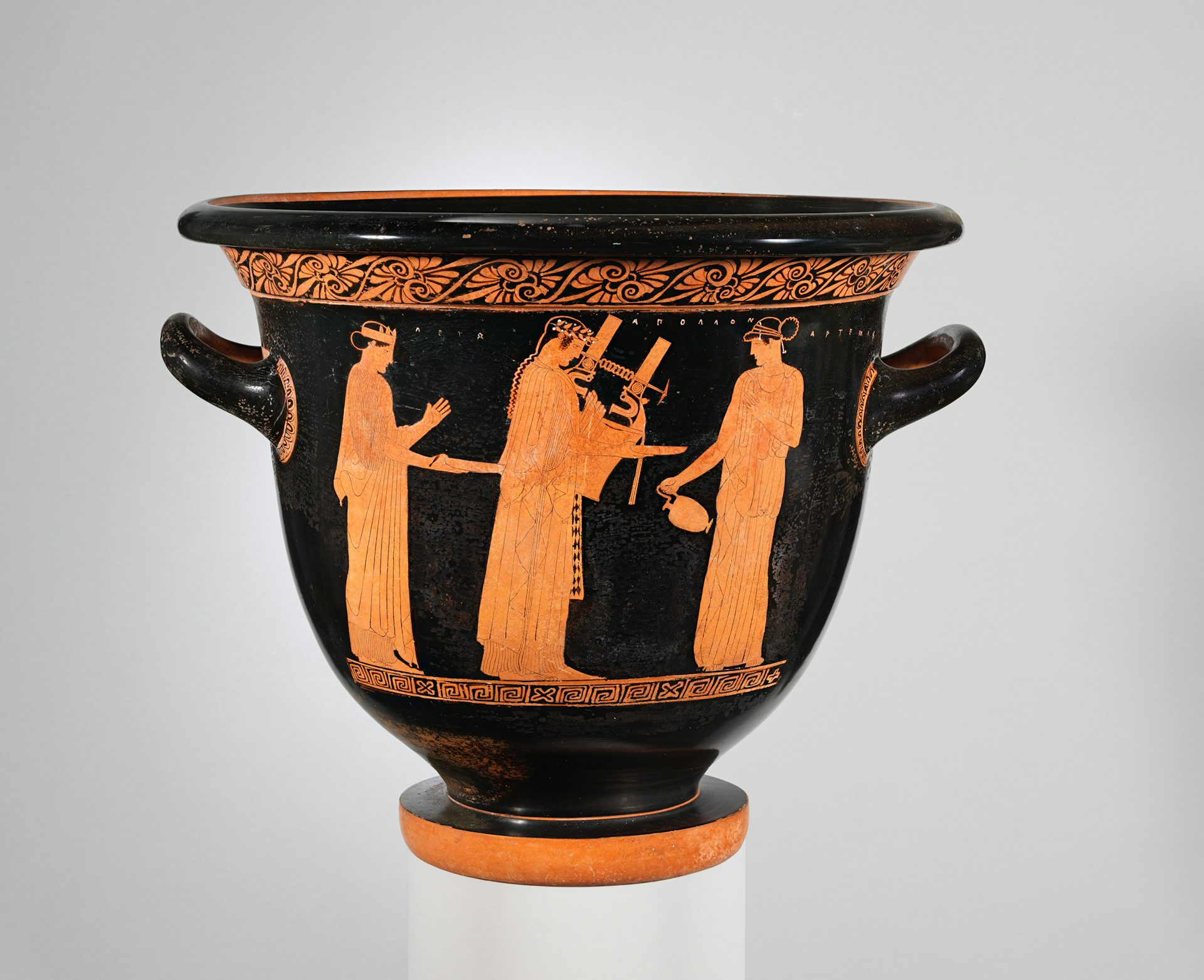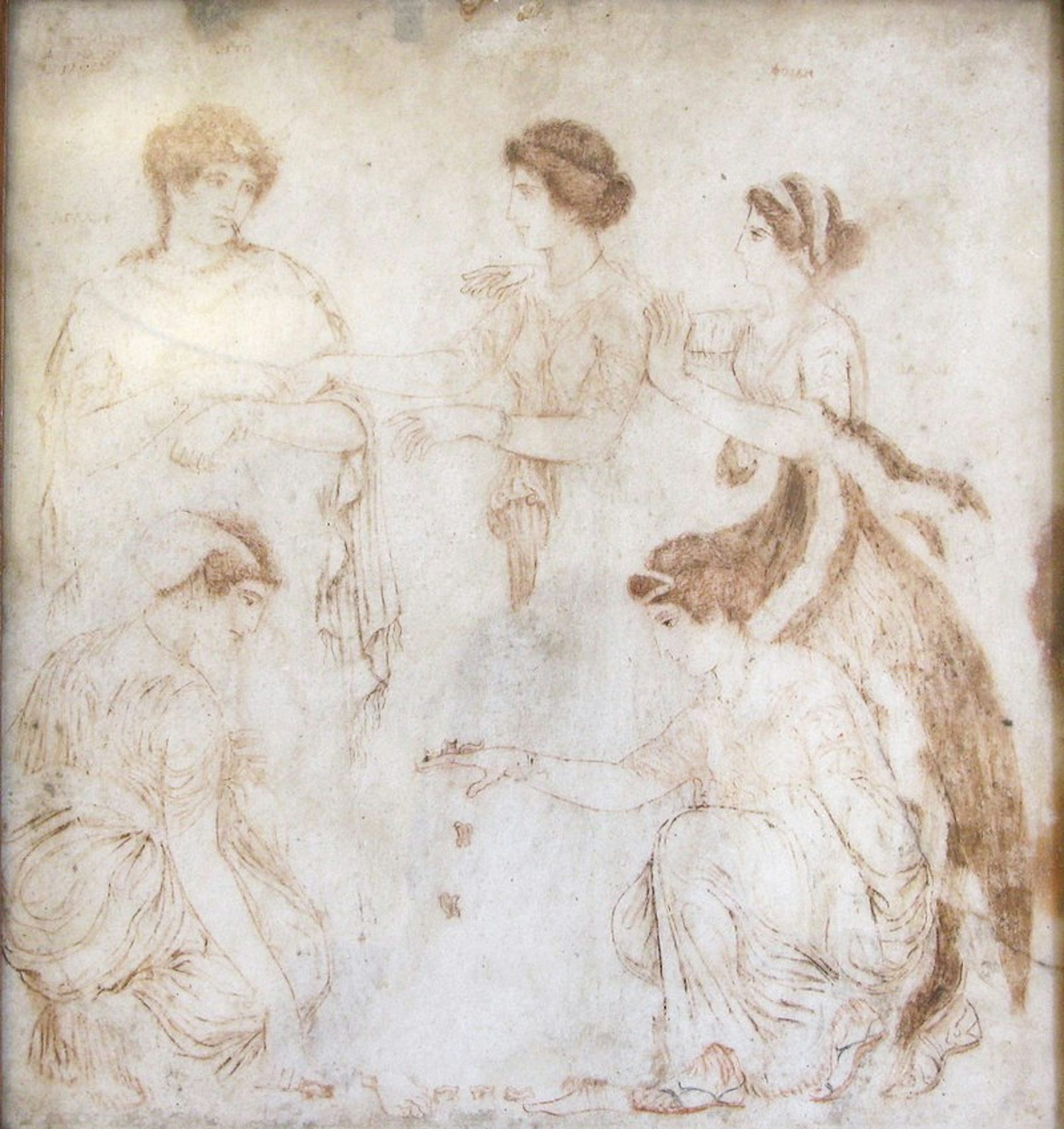Phoebe

Phoebe presents the oracular tripod to Apollo. To Phoebus at His Birth, From Aeschylus, Furies by John Flaxman (n.d.).
Yale Center for British ArtPublic DomainOverview
One of the original twelve Titans of Greek mythology Phoebe was the daughter of the primordial deities Gaia and Uranus. She married her brother Coeus, and together they had two daughters, Asteria and Leto. Through Leto, Phoebe was the grandmother of Apollo and Artemis, powerful gods of the Olympian pantheon.
Etymology
The name “Phoebe” (Greek Φοίβη, translit. Phoíbē) was derived from the ancient Greek adjective φοῖβος (phoîbos), meaning “bright” or “shining”; this name was also applied to Phoebe’s grandson Apollo, who was commonly referred to as Apollo Phoebus, or “Shining Apollo.” However, the ultimate etymology of the Greek phoîbos, and thus also of Phoebe’s name, remains uncertain.[1]
Pronunciation
English
Greek
Phoebe Φοίβη (translit. Phoíbē) Phonetic
IPA
[FEE-bee] /ˈfiːbi/
Epithets
In the Theogony, Hesiod refers to Phoebe with the epithet χρυσοστέφανος (chrysostéphanos, “golden-crowned”).[2]
Attributes
Phoebe’s precise attributes remain unclear, but her name (“the bright one”) suggests some association with light. She was also connected with oracles, both through her grandson Apollo as well as in her own right.

Bell krater showing Leto with her children Artemis and Apollo while offering libations to an altar (ca. 450 BCE).
Metropolitan Museum of ArtPublic DomainFamily
The daughter of Gaia, mother of the earth, and Uranus, father of the heavens, Phoebe was part of a brood of Titans that included Coeus, Crius, Hyperion, Rhea, Oceanus, Iapetus, Thea, Themis, Mnemosyne, Tethys, and Cronus.[3] Phoebe’s other siblings were the one-eyed monsters known as the Cyclopes and the Hecatoncheires, horrible creatures said to have a hundred hands each.
Family Tree
Mythology
Like many Titans, Phoebe seldom appeared in Greek texts. Her role in the Titanomachy and its aftermath, for example, is unsung and unknown. Hesiod’s Theogony, the most complete source for Greek myths on the origins of the cosmos, mentions her only twice. She first appears in a list of the children of Gaia and Uranus; according to Hesiod, Gaia bore “deep-swirling Oceanus, Coeus and Crius and Hyperion and Iapetus, Theia and Rhea, Themis and Mnemosyne and gold-crowned Phoebe and lovely Tethys.”[6] Cronus, who would eventually overthrow Uranus, was the youngest of Phoebe’s siblings.
Her second appearance comes soon after, when Hesiod describes her marriage to her brother Coeus:
Again, Phoebe came to the desired embrace of Coeus. Then the goddess through the love of the god conceived and brought forth dark-gowned Leto, always mild, kind to men and to the deathless gods, mild from the beginning, gentlest in all Olympus. Also she bare Asteria of happy name, whom Perses once led to his great house to be called his dear wife.[7]

This fresco, recovered from a wall in Herculaneum, depicts Phoebe (right) attempting to console her daughter Leto. The work is attributed to “Alexander of Athens,” an artist who remains shrouded in mystery. National Archaeological Museum, Naples, Italy.
Wikimedia CommonsPublic DomainPhoebe’s sparse mythos overlaps with that of her more important grandson, Apollo. In some traditions, Phoebe was the third guardian of the oracle at Delphi, after her mother Gaia and her sister Themis, and it was Phoebe who presented Delphi to Apollo as a birthday gift. Subsequently, Apollo added his grandmother’s name to his own, becoming Apollo Phoebus.[8]
Pop Culture
Phoebe’s influence continues to resonate in popular culture thanks to the many people (both real and fictional) named after her. Commonly used in Greek and Latin, her name has remained popular in languages descended from them.